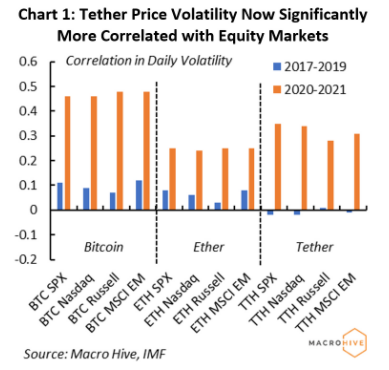
Where does #inflation, US Treasuries and markets go from here? John Welch shared his rather unconventional view exclusive to Macro Hive.
Given how important this is, here's a quick summary:
Given how important this is, here's a quick summary:
[1] In an era of massive QE, we cannot ignore Milton Friedman’s warning that ‘inflation is always everywhere a monetary phenomenon.’
[2] Chart 2 shows the evolution of two measures of money: 1) the monetary base (MB), comprising the monetary liabilities of the central bank, and 2) M2, which includes currency in circulation, demand deposits, time deposits, money market accounts, and other liquid deposits. 

[3] MB growth had a somewhat stable relationship with M2 growth between 1960 and 2008. Since 2008, MB growth exploded and became much more volatile, while M2 growth did not follow until the current pandemic.
[4a] The difference between M2 and MB, a broader measure, is money created by the banking system – sometimes referred to as inside money – that expands and contracts through iterations of lending (paying back) and depositing (withdrawing) the...
[4b] ...proceeds of loans. Therefore, inside money is determined by banks and borrowers and so is endogenous. The ratio of M2 to MB is the M2 Money multiplier and is a good measure of banking system leverage. 

[5] After steadily trending higher since the 1950s, the Volker stabilization caused a gradual fall in leverage (Chart 3). But the financial crisis of '08-9 caused a collapse, as banks tried to collect – sometimes failing – on their loans & borrowers scrambled to pay them back.
[6] What about inflation? Because the multiplier is low, fairly stable and determined mainly by MB growth, we will only look at the relationship between M2 growth and inflation. Chart 4 shows that M2 growth still explains inflation well, especially in recent years. 

[7] If the Fed controls the FFR and intervenes to affect the yield curve, monetary aggregates go a long way to inform us about what is happening.
[8a] What about the lags? A simple VAR shows that the estimated lag between changes in M2 and inflation is about 11 months. Using that same VAR, another Granger test shows that causality goes both ways between M2 and inflation...
[8b] ...that is, changes in M2 predate and help forecast inflation, and inflation increases the nominal demand for M2 as households and firms must pay more for most products.
[9] This analysis shows the Fed is at least 11 months late on changing its quantitative policies, that is, creating MB by buying US Treasuries and MBS. It is also between 15 and 24 months late on raising the FFR.
[10] And this is if the Fed immediately stops buying assets and starts unwinding and starts raising the FFR today. Any remaining hopes for a decline in inflation mid-2022 are a pipedream. The Fed, however, is doing nothing of the kind.
[11] We are way beyond the secondary & tertiary price increase, with the Fed waiting for the last variable of all to react: wages. This strategy, combined with its move to average inflation targeting, has ensured that the Fed is EXTREMELY late.
[12] Therefore, the Fed's expressed confidence in its ability to control inflation is to become less and less credible.... the US Treasury market sell-off has a long way to go, with intermittent recoveries, but a solid march to much higher rates.
[13] What does this mean for risk markets? Well... you can piece it together. See here for the full analysis: macrohive.com/hive-exclusive…
• • •
Missing some Tweet in this thread? You can try to
force a refresh






